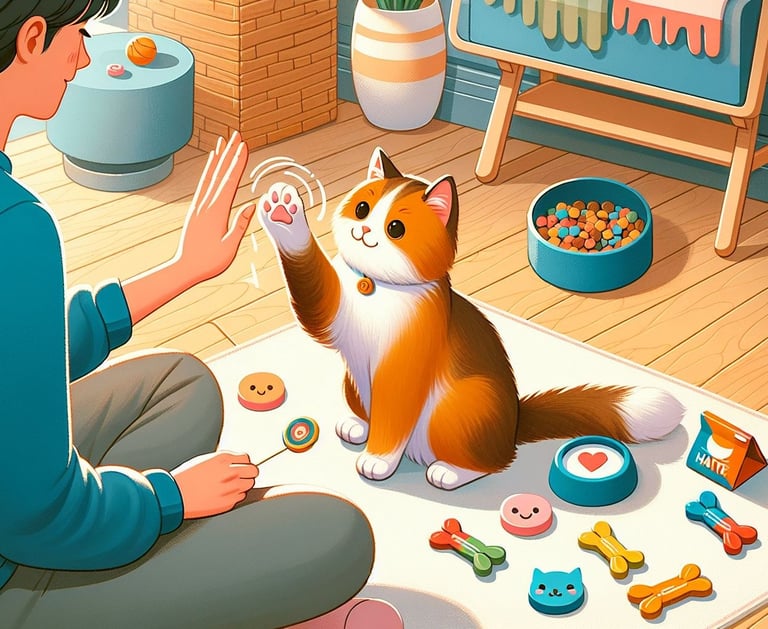OUR STORY
Types Of Cat Breeds
For thousands of years, cats have been beloved companions to humans, captivating us with their grace, independence, and playful nature.
From the majestic lions of the African savanna to the diminutive domestic cats that share our homes, the feline family boasts a remarkable diversity of species and breeds.
In this article, we will explore the various types of cats, delving into their unique characteristics, habitats, and the roles they play in our world.
Domestic Cats
Popular Breeds
Siamese: Originating in Thailand (formerly Siam), Siamese cats are known for their sleek, elongated bodies, striking blue eyes, and distinctive point coloration.
Persian: These long-haired cats are famous for their flat faces, large eyes, and luxurious coats, which require regular grooming.
Maine Coon: One of the largest domestic cat breeds, Maine Coons are known for their impressive size, thick fur, and gentle, friendly personalities.
British Shorthair: These sturdy, round-faced cats are known for their plush, dense coats and calm, affectionate dispositions.
Hybrid Breeds
Bengal: Developed by crossing domestic cats with Asian leopard cats, Bengals are known for their wild appearance, with spotted or marbled coats.
Savannah: These tall, slender cats are a cross between domestic cats and African servals, resulting in a unique appearance and active, curious personalities.
Chausie: Chausies are a hybrid of domestic cats and the jungle cat, a small wild cat found in Asia and the Middle East, known for their athletic build and striking, ticked coats.
Hairless Breeds
Sphynx: Known for their lack of fur, Sphynx cats have a distinctive wrinkled appearance and require regular bathing to maintain skin health.
Peterbald: Developed in Russia, Peterbalds are another hairless breed created by crossing Sphynx cats with Oriental Shorthairs.

OUR STORY
How to train a Cat
Training a cat involves patience, consistency, and understanding its behavior and motivations. Here are some steps to help you get started:
1. Use Positive Reinforcement
Rewards: Cats respond well to positive reinforcement. Use treats, petting, or verbal praise to reward your cat for following commands or exhibiting desired behavior.
Timing is Key: Reward your cat immediately after it performs the desired action so it associates the action with the reward.
2. Start with Basic Commands
Sit: Hold a treat above your cat's head and move it back slightly. This naturally leads the cat to sit to keep its balance. When it sits, say "sit" and give the treat.
Come: Use a treat to lure your cat towards you. While doing so, say, "Come." Reward your cat when it reaches you.
Stay: Encourage your cat to stay in place by holding your hand up (as a stop sign) while saying "stay", gradually increasing the time before giving a reward.
3. Clicker Training
Introduction: A clicker can mark the exact moment your cat does something right, followed immediately by a reward. This helps your cat understand which behavior is being rewarded.
Consistency: Use the clicker consistently for the best results, always following the click with a treat.


4. Address Unwanted Behaviors
Redirect: Instead of punishment, redirect unwanted behaviors. For example, if your cat is scratching furniture, provide a scratching post and encourage its use with treats and praise.
Ignore: Some unwanted behaviors, like meowing for attention, should be ignored until they stop, and the cat should be rewarded for quiet behavior.
5. Keep Training Sessions Short
Cats have short attention spans, so keep training sessions short and sweet, around 5 to 10 minutes. You can have multiple short sessions throughout the day.
6. Be Patient and Consistent
Patience: Training takes time. Be patient, and don't get discouraged by setbacks.
Consistency: Use the same commands, rewards, and methods consistently so your cat can easily understand what is expected.
7. Socialization and Handling
Early Socialization: To help your cat become well-adjusted, expose it to different people, pets, and environments early on.
Handling: Gently handle your cat's paws, ears, and mouth to get it used to being touched. This makes vet visits and grooming easier.
Remember, every cat is unique, and what works for one may not work for another. Observing your cat's preferences, motivators, and personality will help tailor the training process to fit its individual needs.
